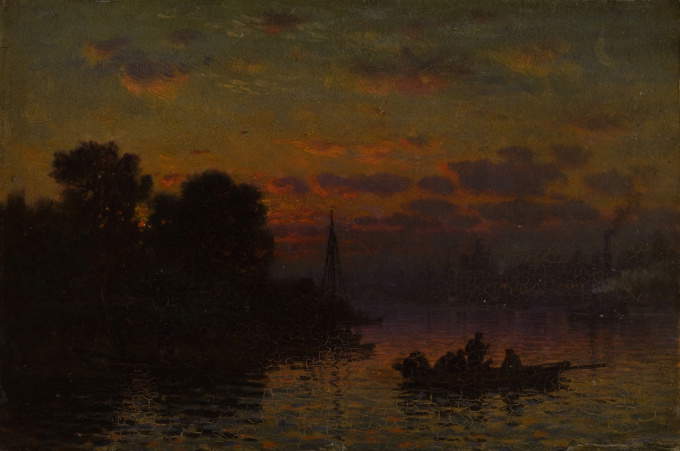Casa De Rodis, an exhibition space in the heart of Domodossola’s historic center desired and created by the Poscio family to bring its art collection to life, turns 10 years old. To celebrate this milestone, the medieval palazzetto will host from September 20, 2025 to January 11, 2026 the exhibition “10 Years at Casa De Rodis,” curated by Elena Pontiggia and designed as a narrative of the exhibition history of this decade.
The exhibition features ten works by ten different artists from the Poscio Collection, offering an insight into its many souls. Three of these works are placed in dialogue with the site-specific project “INTERSPAZIO - Dialogues suspended between sign form and memory” by contemporary artist Matteo Capobianco, aka Ufocinque, who has created installations capable of interweaving ancient and contemporary languages.
In ten years Casa De Rodis has hosted 12 exhibitions, becoming a cultural landmark for the city and Ossola. The small building, of medieval origin, has been renovated with the aim of giving back to the area a place dedicated to the enjoyment of art, meeting and dialogue with collectors and museums, allowing everyone to approach beauty.
The Poscio Collection has a history rooted in the passion of Alessandro Poscio and his wife Paola. It was born, as the collector himself likes to say, from the “passionate incompetence” of two people who for fifty years followed their instincts, collecting works of painting, drawing and sculpture between the nineteenth and twentieth centuries. It all began with the meeting of Alessandro, a young entrepreneur, with Carlo Fornara, an eighty-year-old painter linked to pointillism. From that friendship came the spark that would ignite the building of the collection, made up of unexpected discoveries, lucky chances and genuine falling in love.
From Fornara’s early works, the collection’s path naturally expanded to include Vigezzini’s contemporaries, such as Rastellini, Ciolina and Peretti, and predecessors, often successful emigrant portrait painters. Later it opened to painters of other movements: divisionists, macchiaioli, scapigliati, until the entry of drawing and sculpture, which further enriched the corpus of the collection.
To restore the spirit of the collection, Elena Pontiggia chose ten works by ten authors, each representative of a different moment in art history between the 19th and 20th centuries.: “Through a sort of coring (the ”carrots“ are the rock samples that are extracted to carry out analyses), the ten works intend to give an account not of the whole collection, which would be impossible, but of the gaze that Alessandro and Paola Poscio turned to the works, choosing them out of a falling in love that went beyond any tactics, any strategy and, even more so, any speculation and any albeit legitimate economic calculation.”
The exhibition tour starts with a landscape by Carlo Fornara. It continues with a portrait by Francesco Hayez and views by John Constable and Antonio Fontanesi, two artists who shaped lyrical and evocative visions of nature. This is followed by works by Telemaco Signorini and Giuseppe De Nittis, which testify to the vibrancy of Italian realism and impressionism. Also on display are a drawing by Giovanni Boldini and a pastel by Federico Zandomeneghi, capable of capturing with immediacy the charm and intimacy of the subjects represented. The selection is completed with two bronze sculptures: one by Paolo Troubetzkoy, master of vibrant modeling, and one by Francesco Messina, interpreter of a renewed classicism in the 20th century.
The exhibition not only recalls the history of the Poscio Collection, but also opens to the present with Matteo Capobianco’s project. Born in Novara in 1981, the artist, known as Ufocinque, has developed “INTERSPAZIO - Dialogues suspended between sign form and memory,” an intervention that is grafted into the path with three installations in carved, painted and drawn paper. Each work is conceived as a threshold, an intermediate place between the visitor and the artwork, where the gaze is measured by time and perception.
The three installations are placed in dialogue with as many works in the collection: “Threshold” is juxtaposed with Antonio Fontanesi’s “Landscape at Morestel,” “Shadow” enters into relationship with Paolo Troubetzkoy’s “Dancer,” while “Echo” is measured against Giovanni Boldini’s “Portrait of Madame Errazuriz.”
The 10th anniversary of Casa De Rodis is thus meant to become a moment to reflect on the value of private collecting as a cultural engine, capable of giving rise to spaces for sharing and confrontation, and on the role of art as an experience that unites different generations and perspectives.
Image: John Constable, Sunset on the Seine, 1825
 |
| Domodossola, Casa De Rodis turns 10: an exhibition tells the story of the Poscio Collection |
Warning: the translation into English of the original Italian article was created using automatic tools. We undertake to review all articles, but we do not guarantee the total absence of inaccuracies in the translation due to the program. You can find the original by clicking on the ITA button. If you find any mistake,please contact us.